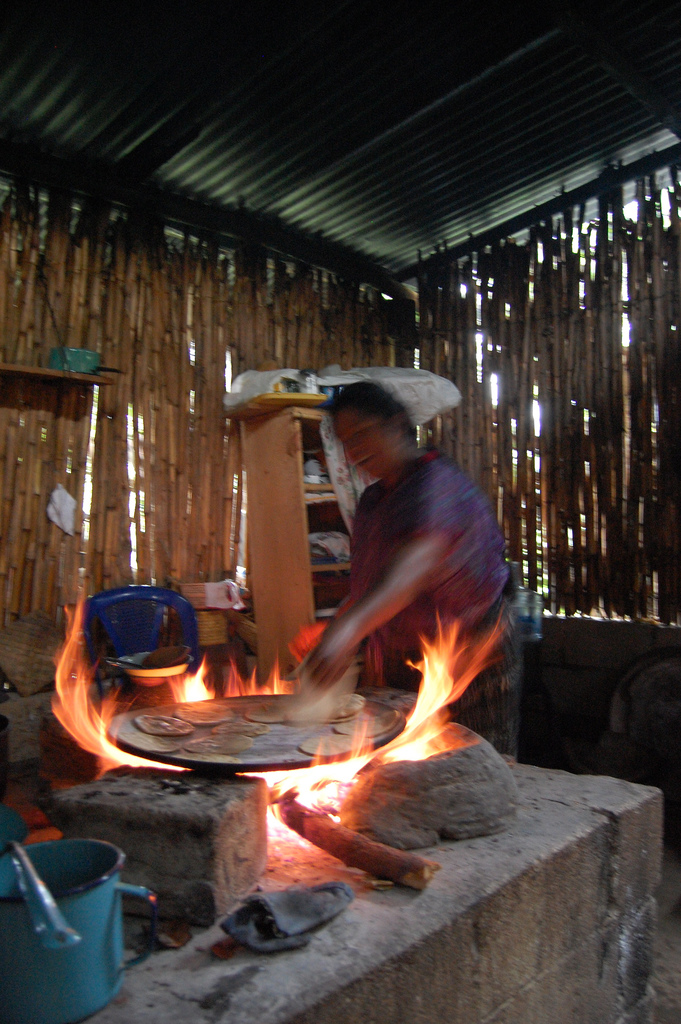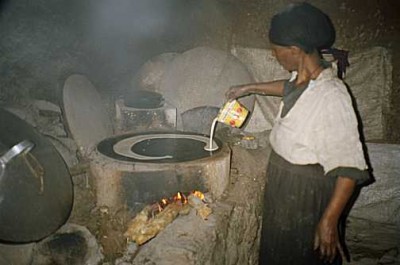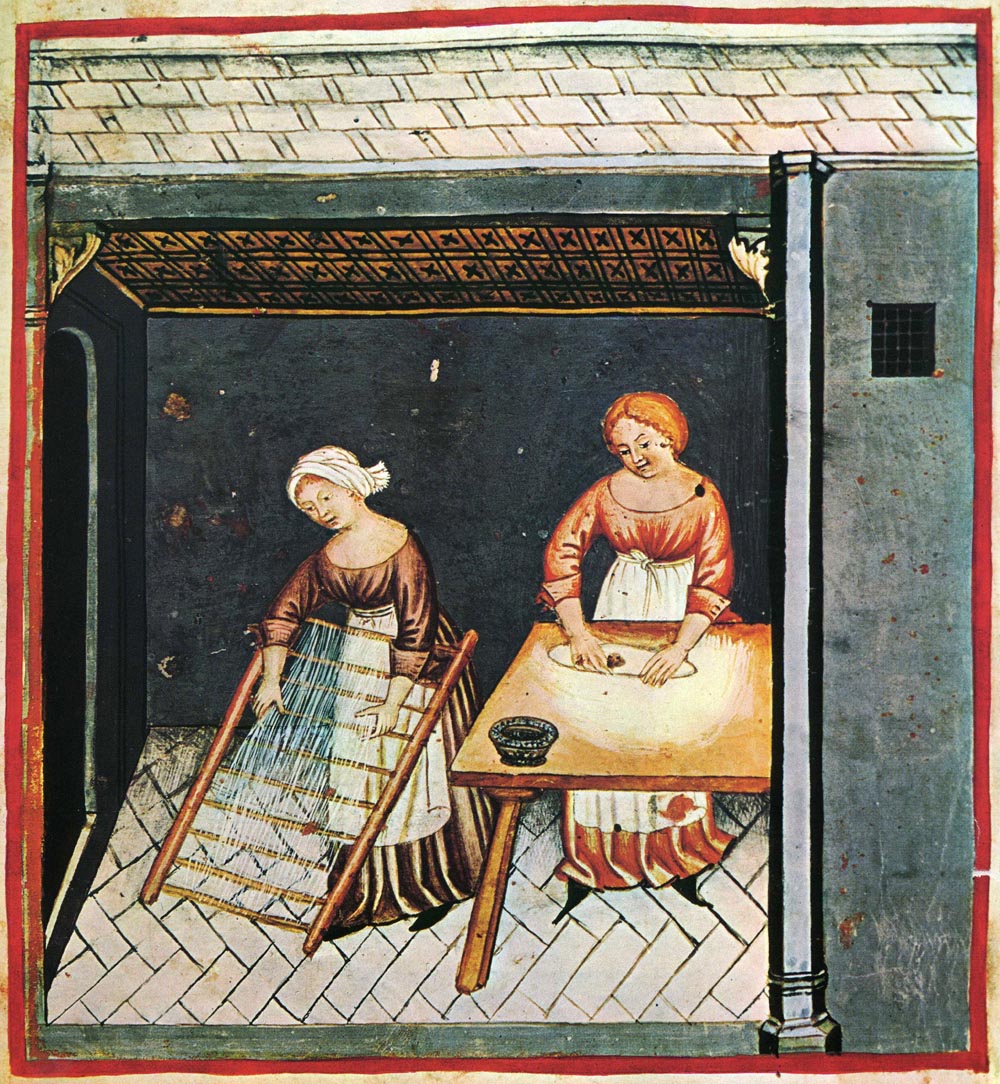|
Burjiko
A Burjiko (also Burjico, Burjik and Burjic) is a Somali-style cooker or charcoal burning stove.Ali, p.13. It is used to prepare a variety of foods. Production and distribution The burjiko is made from sepiolite mined from Somalia's central district of El Buur. The cooking instrument itself parallels in function those found in the Western world. Due to its portability, it is widely used in the Horn of Africa and Southwestern Asia; especially by nomads. Description and usage The burjiko is circular in shape, with a deep hole running through its center where charcoal is placed. This hole is covered with different types of dishes, depending on what one wants to cook. For example, when making ''canjeero'' (Somali flatbread), one uses a flat surfaced dish. A deep dish, however, is preferable when cooking sauce. Besides canjeero and sauce, burjikos are also often used to prepare pasta and meat dishes such as leg of lamb. See also *Somali cuisine Somali cuisine is the traditional c ... [...More Info...] [...Related Items...] OR: [Wikipedia] [Google] [Baidu] |
Somalia
Somalia, , Osmanya script: 𐒈𐒝𐒑𐒛𐒐𐒘𐒕𐒖; ar, الصومال, aṣ-Ṣūmāl officially the Federal Republic of SomaliaThe ''Federal Republic of Somalia'' is the country's name per Article 1 of thProvisional Constitution, (; ), is a country in the Horn of Africa. The country is bordered by Ethiopia to the west, Djibouti to the northwest, the Gulf of Aden to the north, the Indian Ocean to the east, and Kenya to the southwest. Somalia has the longest coastline on Africa's mainland. Its terrain consists mainly of plateaus, plains, and highlands. Hot conditions prevail year-round, with periodic monsoon winds and irregular rainfall. Somalia has an estimated population of around million, of which over 2 million live in the Capital city, capital and largest city Mogadishu, and has been described as Africa's most culturally homogeneous country. Around 85% of its residents are ethnic Somalis, who have historically inhabited the country's north. Ethnic minoritie ... [...More Info...] [...Related Items...] OR: [Wikipedia] [Google] [Baidu] |
Improved Cookstove
One aspect of energy poverty is lack of access to clean, modern fuels and technologies for cooking. As of 2020, more than 2.6 billion people in developing countries routinely cook with fuels such as wood, animal dung, coal, or kerosene. Burning these types of fuels in open fires or traditional stoves causes harmful household air pollution, resulting in an estimated 3.8 million deaths annually according to the World Health Organization (WHO), and contributes to various health, socio-economic, and environmental problems. A high priority in global sustainable development is to make clean cooking facilities universally available and affordable. Stoves and appliances that run on electricity, liquid petroleum gas (LPG), piped natural gas (PNG), biogas, alcohol, and solar heat meet WHO guidelines for clean cooking. Stoves that burn biomass more efficiently than traditional stoves are known as "improved cookstoves", and are an important interim solution in areas where deploying cleaner t ... [...More Info...] [...Related Items...] OR: [Wikipedia] [Google] [Baidu] |
Charcoal
Charcoal is a lightweight black carbon residue produced by strongly heating wood (or other animal and plant materials) in minimal oxygen to remove all water and volatile constituents. In the traditional version of this pyrolysis process, called charcoal burning, often by forming a charcoal kiln, the heat is supplied by burning part of the starting material itself, with a limited supply of oxygen. The material can also be heated in a closed retort. Modern "charcoal" briquettes used for outdoor cooking may contain many other additives, e.g. coal. This process happens naturally when combustion is incomplete, and is sometimes used in radiocarbon dating. It also happens inadvertently while burning wood, as in a fireplace or wood stove. The visible flame in these is due to combustion of the volatile gases exuded as the wood turns into charcoal. The soot and smoke commonly given off by wood fires result from incomplete combustion of those volatiles. Charcoal burns at a ... [...More Info...] [...Related Items...] OR: [Wikipedia] [Google] [Baidu] |
Stove
A stove or range is a device that burns fuel or uses electricity to generate heat inside or on top of the apparatus, to be used for general warming or cooking. It has evolved highly over time, with cast-iron and induction versions being developed. Stoves can be powered with many fuels, such as electricity, gasoline, wood, and coal. Due to concerns about air pollution, efforts have been made to improve stove design. Pellet stoves are a type of clean-burning stove. Air-tight stoves are another type that burn the wood more completely and therefore, reduce the amount of the combustion by-products. Another method of reducing air pollution is through the addition of a device to clean the exhaust gas, for example, a filter or afterburner. Research and development on safer and less emission releasing stoves is continuously evolving. Etymology The term "stove" is derived from the Old English word ''stofa'', indicating any individual enclosed space or room; "stove" may sometimes stil ... [...More Info...] [...Related Items...] OR: [Wikipedia] [Google] [Baidu] |
Sepiolite
Sepiolite, also known in English language, English by the German language, German name meerschaum ( , ; ; meaning "sea foam"), is a soft white clay mineral, often used to make tobacco pipes (known as meerschaum pipes). A complex magnesium silicate, a typical chemical formula for which is Mg4Si6O15(OH)2·6H2O, it can be present in fibrous, fine-particulate, and solid forms. The fibrous clay minerals have recently been shown to exist as a continuous polysomatic series where the endmembers are sepiolite and palygorskite. There is a continuous variation in chemical composition from sepiolite, the most magnesic and trioctahedral endmember, to palygorskite, the least magnesic, most Al- Fe- bearing, dioctahedral endmember. Originally named ''meerschaum'' by Abraham Gottlob Werner in 1788, it was named ''sepiolite'' by Ernst Friedrich Glocker in 1847 for an occurrence in Bettolino, Baldissero Canavese, Torino Province, Piedmont, Italy. The name comes from Ancient Greek, Greek ''sepion' ... [...More Info...] [...Related Items...] OR: [Wikipedia] [Google] [Baidu] |
El Buur District
El Buur ( so, Degmada Ceelbur) is a district in the central Galguduud region of Somalia Somalia, , Osmanya script: 𐒈𐒝𐒑𐒛𐒐𐒘𐒕𐒖; ar, الصومال, aṣ-Ṣūmāl officially the Federal Republic of SomaliaThe ''Federal Republic of Somalia'' is the country's name per Article 1 of thProvisional Constituti .... Its oldest and formal capital city of galgaduud region. The city's population is from the Hawiyespecially Murusade ] clan which is the largest somali clan and descendants of Samaale. References External links Districts of SomaliaAdministrative map of El Buur District Districts of Somalia Galguduud {{Somalia-geo-stub ... [...More Info...] [...Related Items...] OR: [Wikipedia] [Google] [Baidu] |
Horn Of Africa
The Horn of Africa (HoA), also known as the Somali Peninsula, is a large peninsula and geopolitical region in East Africa.Robert Stock, ''Africa South of the Sahara, Second Edition: A Geographical Interpretation'', (The Guilford Press; 2004), p. 26 Located on the easternmost part of the African mainland, it is the fourth largest peninsula in the world. It is composed of Ethiopia, Eritrea, Somalia and Djibouti; broader definitions also include parts or all of Kenya, Sudan, South Sudan, and Uganda. The term Greater Horn Region (GHR) can additionally include Burundi, Rwanda, and Tanzania. It lies along the southern boundary of the Red Sea and extends hundreds of kilometres into the Guardafui Channel, Gulf of Aden, and Indian Ocean and shares a maritime border with the Arabian Peninsula of Western Asia. Names This peninsula has been known by various names. Ancient Greeks and Romans referred to it as Regio Aromatica or Regio Cinnamonifora due to the aromatic plants or as Regio ... [...More Info...] [...Related Items...] OR: [Wikipedia] [Google] [Baidu] |
Southwestern Asia
Western Asia, West Asia, or Southwest Asia, is the westernmost subregion of the larger geographical region of Asia, as defined by some academics, UN bodies and other institutions. It is almost entirely a part of the Middle East, and includes Anatolia, the Arabian Peninsula, Iran, Mesopotamia, the Armenian Highlands, the Levant, the island of Cyprus, the Sinai Peninsula, and partly the Caucasus Region (Transcaucasia). The region is considered to be separated from Africa by the Isthmus of Suez in Egypt, and separated from Europe by the waterways of the Turkish Straits and the watershed of the Greater Caucasus. Central Asia lies to its northeast, while South Asia lies to its east. Twelve seas surround the region (clockwise): the Aegean Sea, the Sea of Marmara, the Black Sea, the Caspian Sea, the Persian Gulf, the Gulf of Oman, the Arabian Sea, the Gulf of Aden, the Red Sea, the Gulf of Aqaba, the Gulf of Suez, and the Mediterranean Sea. Western Asia covers an area of , with a popu ... [...More Info...] [...Related Items...] OR: [Wikipedia] [Google] [Baidu] |
Nomad
A nomad is a member of a community without fixed habitation who regularly moves to and from the same areas. Such groups include hunter-gatherers, pastoral nomads (owning livestock), tinkers and trader nomads. In the twentieth century, the population of nomadic pastoral tribes slowly decreased, reaching an estimated 30–40 million nomads in the world . Nomadic hunting and gathering—following seasonally available wild plants and game—is by far the oldest human subsistence method. Pastoralists raise herds of domesticated livestock, driving or accompanying them in patterns that normally avoid depleting pastures beyond their ability to recover. Nomadism is also a lifestyle adapted to infertile regions such as steppe, tundra, or ice and sand, where mobility is the most efficient strategy for exploiting scarce resources. For example, many groups living in the tundra are reindeer herders and are semi-nomadic, following forage for their animals. Sometimes also described as " ... [...More Info...] [...Related Items...] OR: [Wikipedia] [Google] [Baidu] |
Injera
Injera (, ; om, Biddeena; ) is a sour fermented pancake-like flatbread with a slightly spongy texture, traditionally made of teff flour. In Ethiopia, Eritrea, and some parts of Sudan, injera is the staple. Injera is central to the dining process, like bread or rice elsewhere. Ingredients Traditionally, injera is made with just two ingredients – teff flour and water. Teff flour is ground from the grains of '' Eragrostis tef'', also known as teff, an ancient cereal crop from the Ethiopian Highlands. Teff production is limited to certain middle elevations with adequate rainfall, and, as it is a low-yield crop, it is relatively expensive for the average farming household. As many farmers in the Ethiopian highlands grow their own subsistence grains, wheat, barley, corn, or rice flour are sometimes used to replace some or all of the teff content. Teff seeds are graded according to color, used to make different kinds of injera: ''nech'' (white), ''key'' or ''quey'' (red), ... [...More Info...] [...Related Items...] OR: [Wikipedia] [Google] [Baidu] |
Flatbread
A flatbread is a bread made with flour; water, milk, yogurt, or other liquid; and salt, and then thoroughly rolled into flattened dough. Many flatbreads are unleavened, although some are leavened, such as pizza and pita bread. Flatbreads range from below one millimeter to a few centimeters thick so that they can be easily eaten without being sliced. They can be baked in an oven, fried in hot oil, grilled over hot coals, cooked on a hot pan, tava, comal, or metal griddle, and eaten fresh or packaged and frozen for later use. History Flatbreads were amongst the earliest processed foods, and evidence of their production has been found at ancient sites in Mesopotamia, ancient Egypt, and the Indus civilization. In 2018, charred bread crumbs were found at a Natufian site called Shubayqa 1 in Jordan (in Harrat ash Shaam, the Black Desert) dating to 12,400 BC, some 4,000 years before the start of agriculture in the region. Analysis showed that they were probably from flatbread ... [...More Info...] [...Related Items...] OR: [Wikipedia] [Google] [Baidu] |
Pasta
Pasta (, ; ) is a type of food typically made from an unleavened dough of wheat flour mixed with water or eggs, and formed into sheets or other shapes, then cooked by boiling or baking. Rice flour, or legumes such as beans or lentils, are sometimes used in place of wheat flour to yield a different taste and texture, or as a gluten-free alternative. Pasta is a staple food of Italian cuisine. Pastas are divided into two broad categories: dried () and fresh (). Most dried pasta is produced commercially via an extrusion process, although it can be produced at home. Fresh pasta is traditionally produced by hand, sometimes with the aid of simple machines.Hazan, Marcella (1992) ''Essentials of Classic Italian Cooking'', Knopf, Fresh pastas available in grocery stores are produced commercially by large-scale machines. Both dried and fresh pastas come in a number of shapes and varieties, with 310 specific forms known by over 1,300 documented names.Zanini De Vita, Oretta, ''Ency ... [...More Info...] [...Related Items...] OR: [Wikipedia] [Google] [Baidu] |







